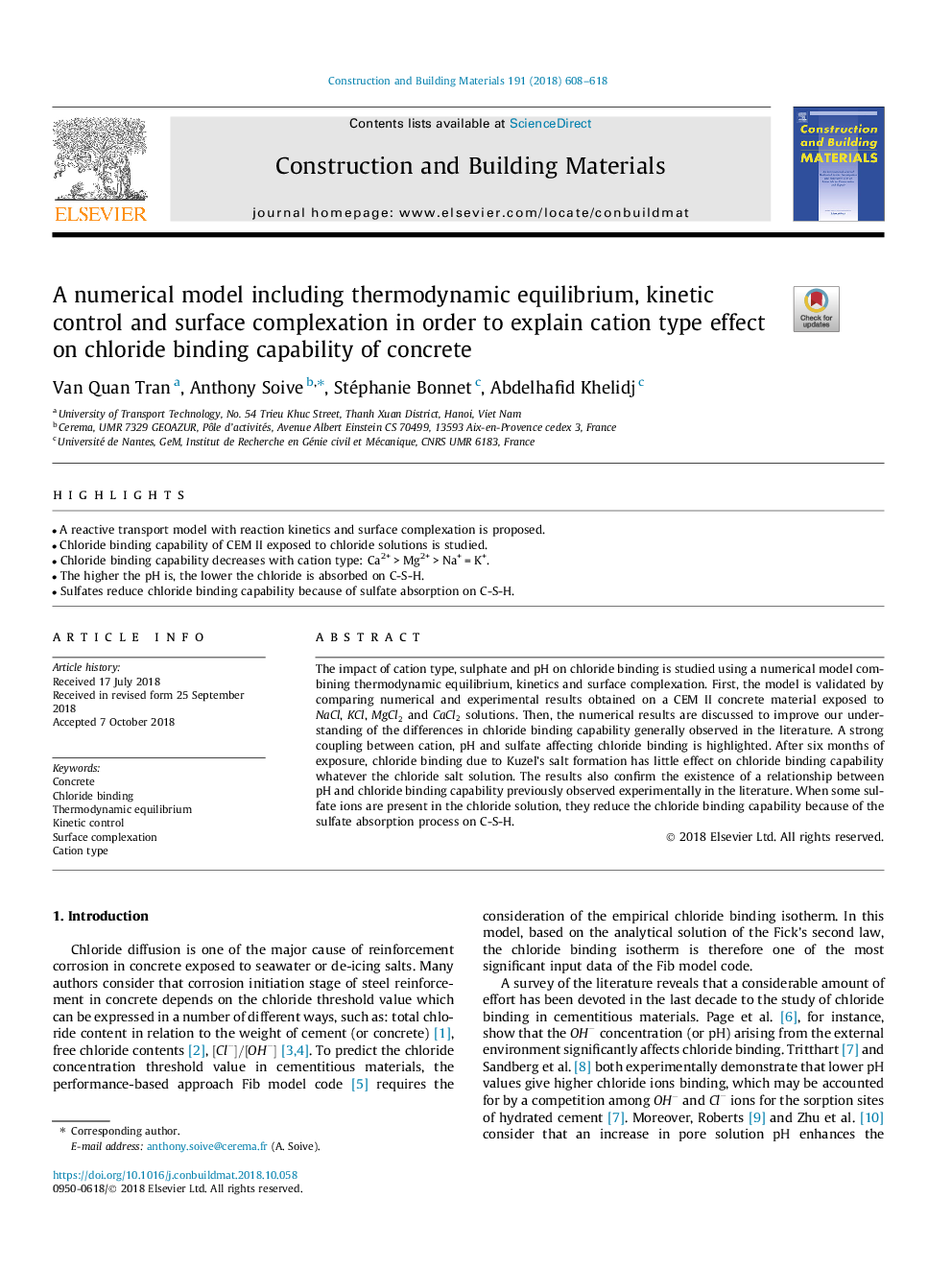| Article ID | Journal | Published Year | Pages | File Type |
|---|---|---|---|---|
| 11263031 | Construction and Building Materials | 2018 | 11 Pages |
Abstract
The impact of cation type, sulphate and pH on chloride binding is studied using a numerical model combining thermodynamic equilibrium, kinetics and surface complexation. First, the model is validated by comparing numerical and experimental results obtained on a CEM II concrete material exposed to NaCl, KCl, MgCl2 and CaCl2 solutions. Then, the numerical results are discussed to improve our understanding of the differences in chloride binding capability generally observed in the literature. A strong coupling between cation, pH and sulfate affecting chloride binding is highlighted. After six months of exposure, chloride binding due to Kuzel's salt formation has little effect on chloride binding capability whatever the chloride salt solution. The results also confirm the existence of a relationship between pH and chloride binding capability previously observed experimentally in the literature. When some sulfate ions are present in the chloride solution, they reduce the chloride binding capability because of the sulfate absorption process on C-S-H.
Keywords
Related Topics
Physical Sciences and Engineering
Engineering
Civil and Structural Engineering
Authors
Van Quan Tran, Anthony Soive, Stéphanie Bonnet, Abdelhafid Khelidj,
